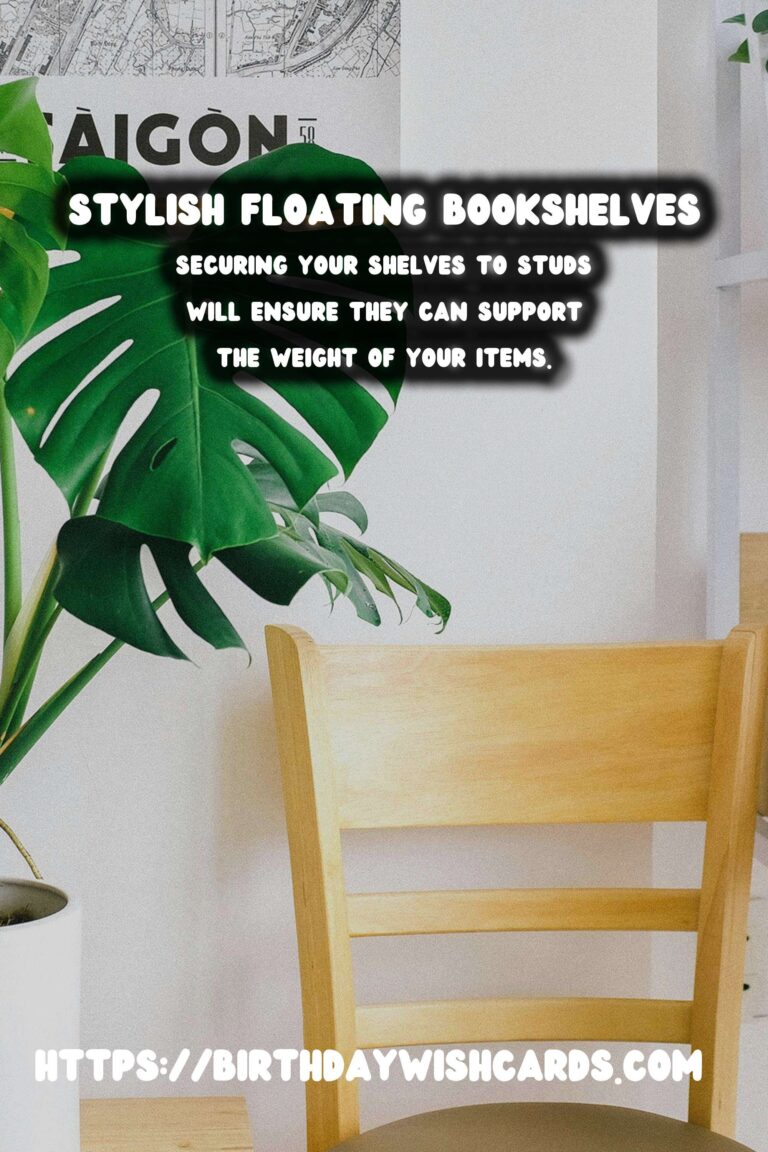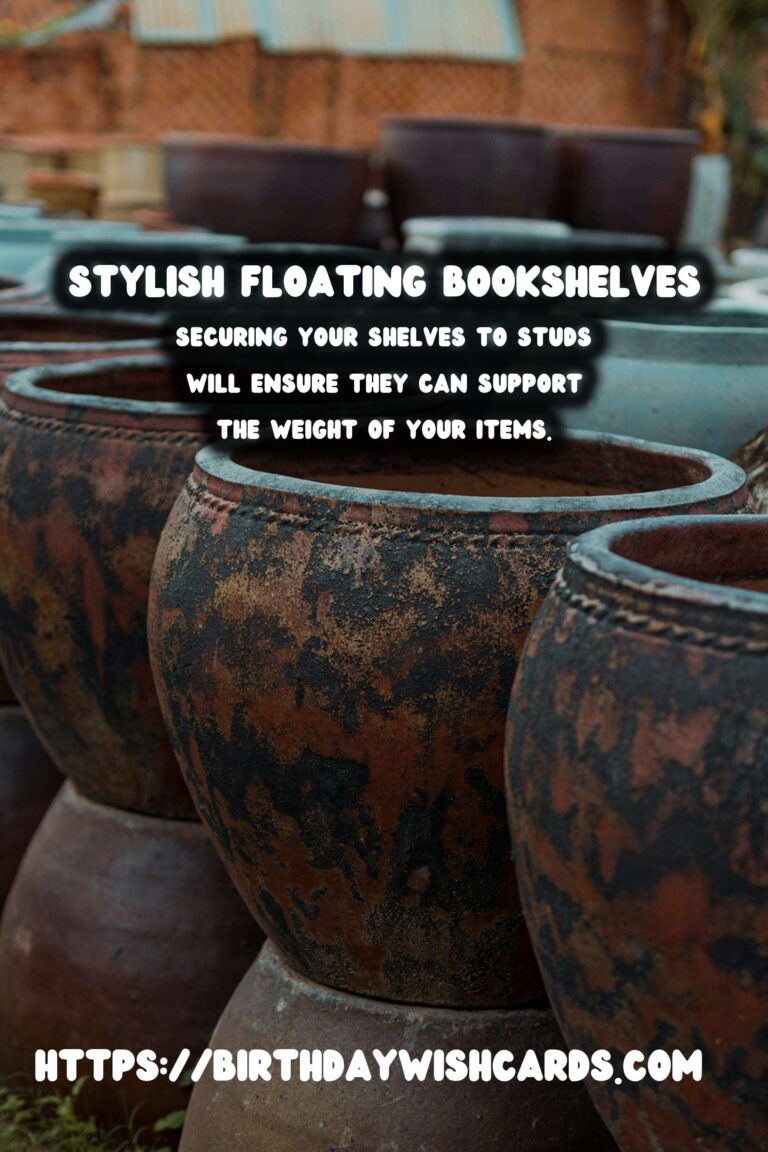
Floating bookshelves are a chic and modern way to display your books and decorative items without bulky furniture. These shelves give the illusion that your items are floating on the wall, creating a clean and spacious look. In this article, we will guide you through the process of creating your own DIY floating bookshelves.
Why Choose Floating Bookshelves?
Floating bookshelves offer several advantages over traditional shelving. They create a minimalist look, are space-efficient, and can be customized to fit any decor style. Additionally, they can be a cost-effective solution, especially when you build them yourself.
Materials You’ll Need
Before you start building your floating bookshelves, gather the following materials:
- Wood planks (choose the type and size that fit your space and style)
- Wall brackets or floating shelf supports
- Wood screws
- Drill and drill bits
- Level
- Stud finder
- Sandpaper
- Wood stain or paint (optional)
- Measuring tape
Step-by-Step Instructions
Step 1: Measure and Plan
Use a measuring tape to determine the length and depth of your desired shelves. Consider the weight and size of the items you plan to display. Mark the wall where each shelf will be installed, ensuring they are evenly spaced.
Step 2: Locate the Wall Studs
Using a stud finder, locate the wall studs where you will attach the brackets. Mark these positions with a pencil. Securing your shelves to studs will ensure they can support the weight of your items.
Step 3: Cut and Prepare Your Wood
Cut your wood planks to the desired length using a saw. Sand the edges and surfaces to remove any rough spots. If you wish, apply a wood stain or paint to achieve the desired finish. Let it dry completely before proceeding.
Step 4: Install the Brackets
Using a drill, attach the brackets to the wall at the marked stud locations. Use a level to ensure they are perfectly horizontal.
Step 5: Mount the Shelves
Place the prepared wood planks onto the brackets or supports. Secure them with screws, ensuring they are firmly attached and level.
Styling Your Floating Bookshelves
Now that your floating bookshelves are installed, it’s time to style them. Here are some tips:
- Mix and match books with decorative items like vases, plants, and art pieces.
- Use a variety of book orientations; stack some horizontally and others vertically.
- Incorporate lighting, such as LED strips, to highlight your shelves.
- Keep the arrangement balanced but not too symmetrical for a more natural look.
Maintenance and Safety Tips
Regularly check the stability of your shelves, especially if they hold heavy items. Tighten screws if needed and avoid overloading the shelves. Clean your shelves with a soft cloth to maintain their appearance.
Conclusion
Creating DIY floating bookshelves is a rewarding project that enhances your home’s aesthetics and functionality. With the right materials and careful planning, you can achieve a professional look without breaking the bank.
Floating bookshelves create a minimalist look and are space-efficient. They can be a cost-effective solution, especially when you build them yourself. Securing your shelves to studs will ensure they can support the weight of your items. Mix and match books with decorative items like vases, plants, and art pieces. Creating DIY floating bookshelves is a rewarding project that enhances your home’s aesthetics and functionality.
#DIY #FloatingBookshelves #HomeDecor #InteriorDesign #ShelfStyling

